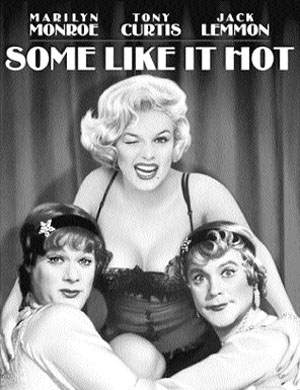
So another M Night Shyamalan movie’s out, and accordingly the M Night Haters Club is back in full swing, complaining about how that villain has caused any number of unmentionable sins. Then of course there’s the remaining few who would never say a bad word against the twist-master because he got their wicks lit nine years ago when Bruce Willis turned out to be dead.
I’m not a member of either party. In fact, I’m probably one of the least conventional filmgoers out there, as far as Shyamalan movies go. I thought
Unbreakable was a bona fide masterpiece,
Lady In The Water captivated me, and
The Village was quite scary, thank you very much.
The Sixth Sense, on the other hand, was a decent enough novelty that was only creepy when I was twelve. Though it’s easy to be indifferent when “I see dead people” becomes a nationally overused catchphrase.
I love Shyamalan and hate him in equal measures, and his new flick, The Happening, is the best example of exactly why this is so.
The Happening, apart from being the vaguest title in recent times, involves people killing themselves all along the east coast of the US of A. It’s got something to do with the fact that the bees have gone missing, and evil plants might be involved somehow. Yep, after ghosts, monsters, scrunts, aliens, and Samuel L Jackson, the plants are coming for us. M Night doesn’t really tell us why, but let’s just say he’s probably been having dinner with Al Gore on the weekends.
Newlywed teacher Elliot (Mark Wahlberg) and his cheating missus (Zooey Deschanel) are trying to figure out the mystery as to why an airborne neurotoxin is making people suicidal, all the while trying to stay ahead of the infection. There’s a kid (Ashlyn Sanchez) in tow, as is usually the case, and she’s not a bad little actress for someone who barely speaks. It’s too bad the same can’t be said for the rest of the cast.
Shyamalan’s visuals are fantastic. The man knows how to use a camera to create a sense of dread, and the film is most tense when it relies on its visuals. He has the gift of revealing and concealing exactly the right things to show you the beginning of a thought and let your imagination do the work. There’s a little gore, yes, but not enough to be desensitising. Unfortunately, he spends so much time on his pretty pictures that he drops the ball on pretty much everything else.
Like I said, the acting is appalling. Marky Mark seems to be channelling a valium-addicted self-help guru, he spends so much of the movie being softly spoken and rational. He’s realistic on the few moments he does freak out, but otherwise he sounds like he’s reading his lines on helium from a teleprompter. Deschanel is slightly better, but is equally wooden, which wouldn’t be so bad except these two have to carry the film, and the dialogue they’re spouting is often clunky and forced. M Night might as well put up a neon sign reading “EXPOSITION” every time they speak, and his usually subtle touches seem forced and obvious here. The only bright spots are John Leguizamo as the kid’s panicked father, and a crazy old lady (Betty Buckley) who briefly takes them in and reminded me far too much of Tim Robbins in War Of The Worlds.
That’s not to say it’s an awful film, but it’s a weak film. M Night’s biggest problem is that he listens to what other people have to say. You like the twist? He’ll make more. Don’t like them anymore? He’ll stop. The last film was too vague? He’ll spell everything out. With this one he’s just confused. There’s a lot of good stuff here, and at only 89 minutes most of the pacing problems are negligible. Apart from parts were people are actually required to act, and the awkward social-environmental commentary, it’s a taut survival thriller with a solid sense of foreboding. Not his best, maybe, but still an enjoyable enough movie experience.










